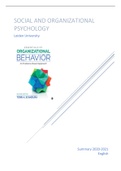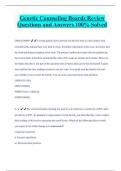Summary
Summary Essentials of Organizational Behavior (2018), 2nd Ed., T. A. Scandura
- Course
- Institution
- Book
Summary for specialization course Social Psychology in Organizations at Leiden University. No need for that ** expensive book with this document!
[Show more]













